|
Let me tell you why you're here. You're here because you know something. What you know you can't explain--but you feel it. You've felt it your entire life. There's something wrong with the world. You don't know what it is, but it's there. Like a splinter in your mind. Driving you mad. - Morpheus; The Matrix It is this inexplicable 'knowing' that drives many of us to begin searching for another way of being. There isn't a thought as such that something is 'wrong', it's much more a 'knowing' and we somehow know that it is to do with mind but also to do with everything. That is because everything that most of us call 'reality' arises from mind. Our exploration of all of this should be experiential. Books, teachers and other sources can be useful to trigger new avenues of investigation but ultimately it is and can only be our own experience that will reveal the truth of things to us in a lasting way. There is a saying 'It is like a finger pointing to the moon; don't concentrate on the finger or you will miss all the glories of the heavens'. Many of us get so overtaken by reading about matters of the mind, listening to podcasts about it and going to more and more teachers to learn additional techniques that we forget it is the practice itself that is the only way to pull up the roots of our unhappiness or mental discomfort. You cant keep running from the practice and expect to get any benefit. The problem is that we tend to try and tackle this problem using by using our mind in an attempt to unpick a problem that is fundamentally caused by our mind, it's a bit like trying to fight a fire by setting light to more things. Of course we predominantly use our mind to solve most of the problems in our lives, or at least we imagine that we solve them, therefore it seems logical that mind will be equally useful here. There is a simple meditation exercise that many people have tried at some time or another - we watch the thoughts as they appear and then drift away. There is often a focus on this observing and then allowing them to pass. What most of us overlook is the most obvious thing: if I assume that I am my mind, then who on earth are these thoughts appearing to and who are they passing away from? If we are those thoughts then we would become a little bit 'less' each time the thought moved on wouldn't we? Yet we are still very much here. There is something else, a canvas if you like, onto which these thoughts are projected. The canvas never changes, never gets coloured by the projections, it is always there regardless of if anything is projected upon it or not. Insight meditation could be said to be an exploration of what this canvas is and to rest more and more simply as the canvas. In fact you cant actually be anything else as you already are the canvas, you have simply forgotten the fact! I travelled down to Bristol yesterday to hangout with two of my favourite people - Ash and Jambo, we spent . a good few hours working on the Advanced TT that we are running next year and of course it ended up with some very profound questions being asked, mainly about the role of yoga teachers in modern society and what we might offer them next year.
I was saying that one of my most uncomfortable hang ups is that I am averse to people thinking of me as their 'yoga teacher' . I feel very uncomfortable when a class claps me at the end of a workshop. Regardless of what you might think, I have no issue whatsoever with self-worth, I have plenty of confidence and my ego needs no boosting I'm sad to say! What I regret is that people don't realise that I was just an instigator, a catalyst, I can't teach them anything that they don't already know. They have all of this inner wisdom and it would be even better if they stood strong in that wisdom. All that 'I' did was maybe reminded them of it. At the end of the day its not really important, that's just my own attachment & aversion shit to deal with, but it got me thinking anyway... So my chosen topic for next year is primarily about our beliefs, or more specifically unpicking the illusion of our beliefs. As a yoga 'teacher' one of the easiest traps to fall into is perceiving yourself as a teacher at all. On our 200hour TT we are very clear at the beginning, that anyone in this responsible role should be very wary about falling into the 'guru' trap.That is to say, it is very easy to start believing that it is 'you' that is somehow delivering something that people need. Of course we all must believe that we have something useful to offer to the rest of the world and I would guess and certainly hope that most people that set out as yoga teachers have - underlying all else - a desire to alleviate suffering in others. Nothing could be more altruistic. But maybe we are overlooking something obvious before we start. 'We' cant actually do anything, however much we believe that we can. There are teachers that I just don't 'get' - they don't resonate with me and their teaching makes no sense to me - at least on a conscious level. It certainly isn't their fault and neither is it mine, it is just that what they are bringing to the table doesn't speak to the truth inside of me. There is absolutely no doubt though that what they bring might make absolute sense to someone else. I have no doubt whatsoever that in my own alter ego as a 'yoga teacher' the truth is exactly the same - some people click with how I frame things and some can't stand the sight of my scruffy barnet or my foul mouth. Many wiser people than me have said that we can never ask a question that we don't already know the answer to - after all if we didn't know the answer in some form then the question wouldn't even occur to us to ask. However that isn't to say that we can see the answer in front of our face and that is where the teacher comes in. We imagine that someone else, someone separate from us is 'teaching' us something, in the case of a 'guru' that they are 'removing our darkness or ignorance'. But in truth they are simply inspiring us to answer our own questions, it is as if what they are saying or doing is reminding us of something that deep down, we already know but have just forgotten. Do you see, you can't learn anything that you already know and you cant be 'taught' by anyone other than yourself. You might get that feeling that a teaching resonates very clearly with something deep inside of you, as a very obvious truth, in fact it would probably be the most true to say that your teacher is simply your own voice speaking loudly to you. This isn't about beliefs, it is about knowing simple truths. If a teacher says something and you have to wonder if you believe it or not then you don't really know it as a truth. However if they say something that clicks, that makes your heart sing. then it is already an inner truth, a wisdom that you hold - there is no dilemma about whether you need to believe it or not. It may also be the case that a teacher you normally don't 'like' suddenly says something that clicks exactly with what you ned at a given moment. Likewise, teachers that have always been your favourites can start to grate with some of your inner truth. It's not as if we are unsure about this when it happens - we know if something resonates with us or not, it is glaringly obvious, we don't have to wonder about it. Sometimes we often may not even 'like the taste' of a teaching, but somewhere inside we know whether it is fundamentally useful and true. So what does this mean for the teachers out there? It means that you don't have to worry about whether people like what you are saying or don't like what you are saying, both are largely irrelevant. Your only duty is to be entirely honest to yourself and speak your truth. If you teach from the heart, however limited your 'knowledge', your grasp of philosophy or sanskrit or whatever, it doesn't matter. Just being there and showing up completely is enough - after all how many times have you thought 'Oh my god that was an awful class I just taught' and then someone comes up at the end and says thank you, that class just made their week? It isn't your job to know what is useful, or second guess yourself, or worry about other peoples opinions. it is simply your job to turn up and BE YOU. Advanced TT details here 'Words are such gross machinery, so primitive and ambiguous' - Frank Herbert
It isn't a rare thing at all for me to be sharing a concept or idea on a weekend of 'training' and to suddenly start laughing out loud because i can see that half the room have this amazing look of concentration / bafflement / total confusion about what Im trying to say. The problem is that words, not least of all being a subjective means of conveying ideas, simply don't cut the mustard when it comes down to describing the reality of how things are - which is inherently indescribable! Most of the 'content' that we absorb and indeed deliver - in books, on courses and trainings, podcasts, discussions and exchanges, even our very thoughts are largely constructed from words. Ironically it is also our attachment to words and language, and our belief in the 'solidness of their meaning' that limits our own understanding of an existence that we are constantly trying to explain through language. There is no doubt about it, language is a great means of communicating and processing on a gross level. It is a big step up from hand signals and gestures, it allows us to efficiently deal with the other actors in our own personal movie, permitting us to explore, describe, instruct, actions, objects, past, present and future. However language is simply too limiting to convey more profound concepts. Often on weekends of training both myself and the other participants find ourselves searching for words to explain unexplainable concepts; tripping over our tongues in an effort not to say what we don't mean or to trap ourself into a corner that we didn't mean to construct. Using words to explain things beyond explanation is like desperately trying to untangle ourselves from the knot of duality by using another knot! The fact is, when you begin to explore deeper truths, real understanding of how things are, language always comes up lacking - words -whether thoughts, written or spoken, can't say enough and yet they also say too much. If language was such a great means for directing the thinker, reader or listener to awaken from the dream reality that almost all of us exist in, then by now, in some language or other there would have been a text, which simply by reading it would have the power to unlock our minds from their matrix like prison. Instead all texts that aim towards such lofty ideals can only allude to their purpose - from the Bible, to the Tao Te Ching and innumerable self-help books - the truth is only to be found through the reader not understanding the text itself - for to understand language is to miss the point altogether - but instead to feel, sense or experience non-verbally, what is being hinted at verbally. What is not being said is just as important if not more so than what is being said. This assumption that words can somehow free us leads many people ever deeper and deeper into a search for the next thing, the book that will make them finally happy, the yoga teacher or style that can unlock my suffering, someone somewhere must be able to explain what this is all about. Maybe I can talk or think my way out of this cycle of suffering, if i can only find the right words to explain it, suddenly everything will make sense! Often accredited to the Buddha, but quoted by many from zen teachers to Bruce Lee, maybe the following analogy works best: 'It is like a finger pointing to the moon, don't concentrate on the finger or you will miss all the heavenly glory!' The finger, that is to say the words or the thought process ,has no power whatsoever to free you-it simply hints at the way, it isn't the way in itself . Become tangled in semantics of the finger at your peril and join the long line of academics in dusty rooms and lecture halls trying to unpick the ultimate meaning of words and language - a meaning that can't be unpicked. All the while wasting the real opportunity to live the 'feeling' , the 'energy' of those verbal intentions or suggestions. Of course we can see that it is easy to fall into this trap, it is so much easier to a mind that thinks primarily in words to to imagine that it will find the answer deeply hidden within yet more words. It is only the unthinking mind that realizes that the answer lays not within the words, but in a place way beyond language , a place that can only be explored by your own light, not by your own descriptions of that light. Of course the irony of this entire blog is not lost on me - it is an imperfect attempt to describe the indescribable; to point the way with the vaguest of gestures; to show something that can only be seen out of the corner of your eye, in a brief glimpse that vanishes if you try to focus o it too forcefully. Using words to explore the fallacy of words! Ha I often say just allow things to simmer, try not to give them too much thought, absorb the sentiment but not the description, you will take exactly what you need from them and that will rise to the surface exactly when it is ready. I never said meditation was easy! Easy and simple are not the same thing. Just like any skill, getting there takes practice and practice might take time...but that doesn't mean that underneath, it is still a simple skill. Ironically it is the simplest thing that you can possibly do. It takes a total lack of effort, in contrast the the enormous effort that most of us associate it with.
The number of people i talk to that have 'tried' meditation and discovered it isn't for them is even greater than the number that don't go to yoga because they aren't very stretchy! Haha. Maybe what they thought was meditation wasn't meditation at all is my greatest suspicion! Equally the number of people that i talk to who want to discuss the difference between meditation and mindfulness, or the pros and cons of all the different techniques, far outweigh those who stop procrastinating and just get on with the job of finding out. We can talk about meditation and mindfulness for weeks, do degrees on the subject and write papers on the merits and differences - it gets us no closer to walking our path-we are just delaying walking the path by looking at the map over and over again. What is 'meditation'? Try it and find out! Ask me what is 'tea' and you'd get a similar answer - you have to drink it to know it - i could talk to you about tea all day but until you have had a great cup (tea before milk of course!) you will never 'know tea'. I often say it is just a study of a strange creature, that creature being your mind. 'Know thyself' as Socrates declared. no-one else can know your mind except you, however many pieces of paper and certificates they have. But it is much more than that. It enfolds every moment of your existence. Tibetan Buddhism calls meditation 'Gom' - literally to 'become familiar with' - with what? With yourself, with your mind and all of its peculiarities. 'How should i meditate?' is the next most common question. How do you want to meditate ? Is my normal answer Sit, walk, wash the car, drink tea, have a disagreement with a neighbour. They all offer perfect opportunities to practice Gom, to become familiar with yourself, your reactions, your habit patterns. Let's take the example of sitting because most people associate meditation with crossed legs, bums on mats. To practice sitting meditation, what you really want to practise is the art of sitting, nothing more and nothing less. To do nothing but sit. What else is there to do? I can play all sorts of distracting games with myself that i might call or mistake as 'meditation': blocking thoughts, reciting mantras, getting tied up in thoughts, getting frustrated at my lack of 'progress', my lack of 'meditation'. All of this time i am ignoring the sitting, I have departed even from sitting. Im not sitting anymore, i'm somewhere else in my head, in the future or the past. My bum may be on the floor but i'm not aware of it, my awareness is elsewhere. How complicated and pointless!! However simply to sit and do nothing but sit, to be fully aware of sitting and totally immersed in sitting, to be distracted by nothing but sitting, that is a pleasure and it requires not the slightest bit of effort. Simply let go of everything but sitting. Q-How long should i sit for? A-Until it is time to not sit! Q How do i know when that is? A You wont know unless you practise sitting :) Im afraid you just have to sit, or walk, or drink tea or wash the car, and you just need to practice doing 'it'. That is to say, practise it and nothing else - to know you are doing it, to feel you are doing it, to be thoroughly saturated by doing it. Then your meditation becomes everything that you do, in every second, and then you answer the question for yourself and laugh: 'What is meditation? 'There is no such thing as meditation, just doing' And maybe eventually you'll realise 'There isn't even any doing, because there is no doer' But thats a topic for another blog :) I suppose most of my workshops, CPDs and certainly the entire teacher training are all dedicated at their heart to both finding freedom as a teacher and facilitating freedom within your students. This is a massive topic, no doubt endless but it flavours almost everything that I ever share. This freedom requires space. Space can often seem empty of content and therefore of no valuable, yet really the spaces that you create as a teacher hold infinite potential for both yourself and the entire group.
Indeed this past weekends TT in Devon revolved a lot around that topic and we explored it from all sorts of angles, although this time they were from the point of view of asana practice. I often get a feeling in my bones that asana was included in the eight limbs as a joke by the wise, a clever experiment, not as an instruction to be followed. It can seem peculiar to include a practise so aligned with the physical body into an arguably metaphysical pursuit. You have to wonder if there was meant to be a much greater lesson to be unveiled through a dedicated physical practice of asana. Just as many Buddhists believe that the Buddha taught an end to suffering through eliminating desire-aversion and attachment; wiser scholars have pointed out that he did not 'teach this' as a practise and in fact it was a point of discussion in order to prove a point via its attempted practice - the point being that this endeavour would prove impossible because one would have to desire being desire-less! Likewise through our experiential practise of asana we can learn so much about every other aspect of life. There are so many pitfalls and cul-de-sacs awaiting asana practitioners - falling into ego attachment, asana attachment, injury and tumbling headlong into duality of progression and attainment being the most obvious. It would seem that eventually after exhausting ourselves with the many dead ends of asana there may come a point at which we learn many transferable skills to our actual 'life' but are essentially able to completely release it – or at east to release any attachment to its debatable 'fruits'. From a teaching point of view, Im going to focus on something that may seem so simple that most of us obverook its potential power - the naming of postures. The simple naming of 'postures' will set up an immediate wave of aversions and attachments to everyone in the class - some will fear crow pose, think they aren't good enough, worry about injury, others will love it, enjoy demonstrating their prowess, feel good about themselves. Posture names, by themselves mean nothing at all, They simply allude to a certain type of shape when really there is no 'posture' at all and there never will be, there are simply infinite variations for not only every person but also every person each time they come to practice. However we could argue that naming postures shuts down space and potential immediately - removing the beauty of enjoying these infinite variations. To take a simple example Warrior 3 means nothing, it’s just another compartment, another segregation that hints at a body shape, yet that shape will feel entirely different to every single person in the room - this is a factor of proportions, strength and flexibility, injuries, past history and so on. Infinite factors. Would it not be more useful to guide the movement simply with some body orientation cues and some simple questions that offer space - possibilities and potential for the whole class to interpret and draw from as they need to. After all asana is a process of exploration not progression, the danger of naming a shape is that it brings immediate comparisons relative to others, to your past practices and so on. Simply hinting at body placement with questions to ponder provides everyone with possibilities for personal development, it is a win win situation, there is no way that you cannot benefit. Imagine you have managed to get the class into a one legged balance with all sorts of potential variations that alludes to what we might otherwise call warrior 3. Everyone has found a vague shape, what happens if you ask some intelligent questions now? ‘How does this position make you feel?' 'Can you explore that feeling and maybe alter it?' 'Do you think there is a lack of effort right now?' 'Are any parts of your body doing nothing?' 'Is that affecting your balance and can you explore ways to find more balanced engagement?' At the end of the day, how stable or well balanced their take on a one legged balance is, it doesn't really matter in the grand scheme of things. However if you offer up the space to explore these elements without any scale of pass /fail or good/ bad, over time students can take these skills and transfer them directly into the rest of their lives, maybe finding stability and balance in their lives. Maybe they will find themselves transferring this type of logic into a situation where they feel agitation in the body during a confrontation - rather than react they simply become aware and explore it with curiosity yet detachment. After all find perfection in one thing and you can find it in anything. Next workshops exploring space and freedom are: 19-22 April in London (with Jake Smart and Embodic Yoga and Movement) 18-19 May, Wild Wolfs Yoga, Bristol It can be very confusing being a 'yogi' in the modern world, whatever being a 'yogi' actually means?
It's a label thrown around a lot, but Im not sure that many of us actually sit with the powerful significance of that label; a label of course which is in itself means nothing. Just a word. Semantics. We are basically 'just human' after all, to apply any other label over the top of that is superfluous and opens the doors to doubt, guilt, feelings of unworthiness in the role we have projected upon ourself. After all a worker bee doesn't call itself a worker bee, a tiger doesn't call itself a master hunter, they just do what they were born to do; they live up to their own purpose, unquestioningly. They feel no need to declare what they are or what they do, essentially its an irrelevance. In this modern era of yoga with its countless, probably pointless divisions into all manner of systems and styles, it can often be overwhelming to know who or what is 'right' and whether to truly trust that you are doing the 'right' thing in your practice. How do you know you are a yogi? Of course the simple answer is that you don't. The term yogi will only ever have the meaning that you apply to it. If to you it means that your practice is to meditate in a cave forever then you'll have clear markers of failure or success for both yourself and everyone else. If your idea of practice means that you dedicate your life to serving others, then you know what you have to live up to - or of course you just live it, Mother Theresa style, and have no need to call ourself a yogi - the word adds nothing, the practice is simply your life. Alignment cues change and the ones we accept now will no doubt change once more over time - to imagine that we will ever have a definitive grasp of what is right for every anatomy is foolish to say the least. Students shift from teacher to teacher and from one style to another seeking and searching. Many studios seem more obsessed with opening ever more spaces and the instagram profile of their teachers than any actual knowledge or depth of practice. In a darker moment, one might say that we sit in the midst of a confusing mess. We overlay an awful lot of complicated practices, rituals and nonsense on our practice and 'yoga'. However most of us simply miss the first matter of importance, which is that we simply need to practice. Not on a mat for one or two hours per week for £10 (although thats a nice start if you like that sort of thing) but we need to practice every single moment that we wake up and remember to do so - that includes when we are happy, angry, sad or content; eating our toast, on the toilet, driving a car or sitting quietly. Secondly underneath it all, beyond all of this confusion of styles, studios and prceptions of what is yoga and what isn't, like a clear sky always behind the clouds, is the truth that to practice simply is enough. We all have an inner guide, an inner purpose. If you think that you don't, then you really must spend some more time listening out for it because it is in there talking to you all of the time. Of course if you don't listen out for it then you wont hear it. You body know what to do, how to move, when to move, if you listen carefully to it, to its pains, tensions, spaces, likes and dislikes. It knows to skip, to dance, to stretch or to rest. Trust it to know what is right. Your breath doesn't need you to breathe it, it is perfectly capable of breathing itself, all that you have to do is to listen carefully to it and to give it the space that it needs. You mind knows when it needs to be still, when to act and when not to. It may seem to chatter constantly but when you permit it the space to be still and calm, it will eventually walk through the door and sit quietly with you. We spend so much time putting expectations on ourselves, when really freedom was right there in the palm of our hand all along- we simply have to relax our clenched fist and allow it to breathe. In recent blogs I have talked about wisdom versus knowledge, trying less as a yoga teacher, the secret magic ingredient to teaching yoga and now I am going to talk about how important it is to be a fool in order to be the best yoga teacher you can :)
I've just rounded off my first functional breath-work weekend for existing teachers, I had a total ball and I hope that they did too, but a few really interesting points came up that I hadn't really ever considered. This train of thought began when one of the lovely teachers present came up and told me 'Im so glad that i came, I think it took me ages to come to one of your workshops because I felt threatened by your approach to not having a system; I worried that I might start to doubt the validity of everything I've learned and believed in!' Wow! What incredible self-awareness and honesty! What probably confused them (or relieved them) was that in the first few minutes of the weekend I encourage everyone to disagree with anything i say; to simply shout out and speak up at any time if they disagree with me or to call bull%&*t on me if they think it right to do so. Truth is, I don't want people to agree with me, we rounded off pretty much every exercise with a group feedback session, I wanted to hear that things didn't work as much as i wanted to hear that they did! Sure enough, without exception we found that when we were being honest, something that worked amazingly for one person, had the opposite effect on another. There really is no magic pill in anything! I hear way too many stories from students about workshops that people have attended with a super knowledgeable, yet super over-bearing or defensive teacher who wont stand for their viewpoint to be questioned let alone criticised. It says to me simply that those 'senior teachers' are afraid. They are afraid that they won't stand up to question, they lack confidence in the fact that other points of view are possible equally or even more valid than theirs and quite possibly they are reluctant to evolve and learn from those that they have separated as 'students' with less knowledge than them. Everyone is very quick to pay lip service to the term 'always a student' but do you really mean it? Especially if you are perceived as a teacher? Its just a question. No-one likes to feel like a dinosaur with outdated knowledge, but the simple fact is there is ALWAYS someone that is more knowledgeable than you. There is always someone tougher than you, always someone faster than you. So how does this link to the benefit of being an idiot? Its all to do with having a fools state of mind and being content with the fact that you are, underneath it all, an incompetent idiot :) I was very kindly complimented on the way that I described the often complicated mechanics and chemistry of breathing and was even more shocked to be complimented (by a Buddhist) on the way i described a fairly simple yet often over complicated teaching of Buddhism in relation to the sensation of breath in the body. Chatting with Charlie, who I consider to be an amazing teacher in his own field, he said that I made complicated things sound simple (funny because I think that he does the same with lucid dreaming and shadow-work) . We both came to the conclusion that what we both do is to assume that everyone in the room is as stupid as we are! It took me ages to get these concepts clear in my own head. I came up with all sorts of odd visual ways of understanding them. I was always the odd on out in the science department, being far more creative than scientific by nature. To understand the trickier aspects of various philosophies has taken me even longer. Hence all of my odd stories of blood cells as DHl delivery vans carrying orders of bread and footsteps in dark alleys to explain the concept of emptiness. To allow yourself to be criticised openly, to have your teaching questioned is an unnerving thing, but incredibly powerful if you allow it to happen. At the end of the weekend I taught a brief exercise and explained what i thought the benefits of two variations were, I then got cross questioned by one of our own TT graduates (thats what they get used to doing!) and I realized that actually I didn't understand fully what I had just said because I couldn't answer her question. What happens at this point? You generally react without thinking to a sensation in your body that says Im Under attack! You assume you are reacting to the person or the question but no, just to a sensation. What works best at this point is to simply accept 'Im a fool as much as anyone else here and this is a great opportunity to re-examine something that I thought I'd understood. Either I've misread it somewhere, misunderstood it or explained it badly. My job now is to go back to the source and re-explore that topic to find out which it is. At this point i must be thankful to the person that has made such an astute question, they aren't my enemy, they are the enemy of my ego and my egos enemy is my friend; that is a good thing as far as I'm concerned. So allow yourself to be a fool, an idiot. Allow your ego to be abused and attacked. Allow yourself to be imperfect and wrong. Encourage criticism or questioning. Don't defend your views simply on the basis that they are 'your views'. You will find that you open up. You provide space for your students to open up and be imperfect too. That acceptance and empowerment is the sign of a useful teacher. I found this nice snippet from an article online, sadly i cant credit it as i cant see who wrote it but it relates to the fool archetype that exists in almost every philosophy and religion. The Fool keeps us humble by revealing our limitations, and shows that anything is possible when you let go of expectations. The Fool teaches us the healing power of laughter. The Fool inspires us to share our joy and sadness so that others may laugh and learn and grow. The Fool is never what you expect, reminding us to see the world with new eyes. The Fool provides relief from pain and stress with an indulgence in the silly, the frivolous, and the funny. And the Fool stings us out of complacence and stagnation, returning us to the path of growth with a blush on our face and a sting in our pride. Look a the photo above and the photos at the bottom, everyone laughing. Thats my measure of success in a class...oh and if no-one dies, thats a bonus too.
I’ve been trying to untangle the events of Sunday, I talked about magic in my blog last time and it seemed, to me at least, that it was a very magical session. Its just a fluke I thought at first, just the energy in the room so, I spent most of yesterday trying to untangle the class and what happened I’m starting to truly believe that the REAL potential benefits of a yoga class don’t come from anything that we ‘think’ it does. I’m one hundred percent sure that the number of people who find their back pain is helped by the asana are outweighed by those that aren’t; I’m equally sure that the few whose anxiety or other mental pain is eased by meditation is outweighed by those that just don’t get it or find it too much to be with themselves and never come back. The process isn’t the problem, if you stuck with it for long enough you might eventually find something, you might not, but really I just think that we aren’t hitting on the things that people truly need from our classes. I am certainly not saying I’ve got the answers, just a flawed opinion as ever, but I want to try to describe the method behind my madness. On Sunday I guided a 40 minute, breakneck, full throttle class of seventy people I’d never met, at a wonderful charity event organized by good friends in Bristol. I wanted it to be 40 minutes of PURE YOGA ----- Yoga in its truest sense – YOKING, CONNECTION absolutely NO SEPARATION. In forty minutes. Connection to OURSELVES AND EACH OTHER – so we threw away the mats immediately, get rid of those islands, they literally make me shrivel up inside to see everyone metaphorically isolating themselves. I’ll do stuff that doesn’t need mats. Simple solution. We crawled and walked with eyes closed for five minutes; my favourite exercise, totally relaxed in breath and body, allowing ourselves to bump into other humans and forbidden to say ‘Oh ooh I’m sorry!’ if we did. For gods sake we are human, we bump into another human or brush past them and the whole world tenses up. You can feel the room slowly let go of their tension, you remind them to relax their hands, to stop feeling their way, to drop their shoulders, to settle their breath, they bump a few times and realize ‘Hey, it’s not that bad, nobody died and nobody punched me!’ You feel the entire room become grounded. I asked them to dance, to choose the person nearest to them and then if they knew them to turn and face someone they didn’t know, To CONNECT WITH A STRANGER. This took 5 seconds, why? No time to be anxious. Anxiety involves projecting into the future, simply remove the future and drag everyone into the now. No time for anxiety. They then led each other in spontaneous ways in an infectious magical dancing shuffle to some infectious magical music. It's ten minutes later, we have connected to PLAY, to have FUN; spiritual people would call it the INNER CHILD, I call it arsing about, being normal humans together and laughing about life. It’s not hard, you don’t need to do a ceremony to connect with the inner child, you just connect because its already there, bubbling just under the surface; it wants to play, and it sees the rest of the room have and no one has had time to be shy, so you just join in and Suddenly…WHOOOSH…the inner child is out and then all hell breaks loose and I can sit back.,,. This beautiful old Chapel, once a place of worship, is a place of worship again ….. FULL TO THE RAFTERS WITH LAUGHTER. And heat. So much energy being released, so much heat you could feel it as you opened the door. And what was generating this heat?? CONNECTION. To achieve things fast you need to go outside the box, sometimes so far outside the box no one else has the faintest idea where the box is – that’s a concern for later, if ever. So I played all week with props, small props, light and easy to carry for seventy people, props to create spontaneity, challenge, fun, laughter and connection. Props that could be used with a partner or alone. What did I come up with? Tissues! I’ve added a little video, though it doesn’t quite capture what I felt watching a room full of adults playing, and yes I even included some asana in there to keep everyone happy, in case they doubted that this was yoga! But asana with tissues J I did lose count of the number of teachers who said ‘I’m gonna use that in my class this week’. That means it hit a chord, there was a resonance, probably unexplainable, it wasn’t the tissue, it was what they facilitated – PLAY, CONNECTION, LAUGHTER, PRESENCE, LETTING GO. But if one person does it and says, ‘You know what. I’m saying that this is yoga and I don’t give a f&*% if you don’t buy that, cos we are doing it anyway-because I, really, truly believe it works. In fact I believe it is more functional than 108 sun salutations in silence, because you know what we are with ourselves in our own head all day and I don’t believe that another 108 x 4 minutes is gonna do anything to help that’ Someone else, a past student and a friend came up and said to me, 'You're always just winging it aren't you!?' and the truth is yes, i totally am, I was making up parts of that class as we went along. 80 percent of it i'd never even tried before. But there is such fun in winging it and just accepting that you're winging it and letting people know you are winging it. I think there was a moment when i took a bit of video and shouted 'I've got to catch this I never thought it would work!' Truth i the whole world is winging it, we are just terrified that we will get rumbled at some time. No-one knows what they are doing really, we are all just doing our best to muddle along and maybe do some good while we are at it. And that is why, I am not averse to styles or systems, to asana or pranayama, to qi gong or karate, to Buddhism, Christianity or any other religion, but why I will never settle on, or conform to any one thing. Because they all have magic, but it can get lost in the practice and there is so much more magic out there when you open up to combining them with a catalyst like a simple box of tissues and all of a sudden you have rocket fuelled connection…….and yes the the tissues did get recycled before I get lynched. I can't claim to have much wisdom, I suppose I do have a little knowledge and possibly at times a timely dose of magic! The first two -knowledge and wisdom-are very different things and we can often forget that. You need both to plan a good workshop or weekend or teacher training. One without the other is very unstable. I have been to (and delivered) workshops that were full of amazing exercise but somehow fell flat and others that were understated and simple yet really hit home. It can be an elusive and confusing world to inhabit, no wonder so many yoga teachers avoid them like the plague! Knowledge At the moment I am putting together the upcoming Teachers Functional Breathwork Weekend in London. As you can see from the photo, I have literally dozens of pages of notes (they start off handwritten, get typed up then changed and evolve constantly), probably a dozen or more books (many are digital as well which i cant show here), am currently studying courses and have studied various breathwork methods in the past. These are the ways in which i start to put together the knowledge that I need. It is a case of exploring the techniques on offer, the methods and reasoning behind them, the background anatomy and physiology in this case and so on. Just like a London taxi driver, I am learning, absorbing, putting pieces together and developing the most efficient and fluid routes to get people where I want them to go. I suppose in reality the knowledge building stage has been going on for years, from suffering with asthma as a child right up to the present; my studies at medical school and teaching as a science teacher, my enthusiasm for reading, learning, watching, absorbing and cross referencing information form as many sources as possible. This stage of planning has been quite intense for a few months now, as I start to put all of the pieces together in a logical format, you know that you have the entire jigsaw at this stage, you just aren't sure how it pieces together! Wisdom As the title says though Knowledge is not Wisdom. This full weekend version has now been delivered in shorter formats of half a day at various times. Those half day sessions take the knowledge and start to test it out in real life. Although I may have practised all of the techniques that I want to include, that is very limited research until you get more real life guinea pigs to research on! Some exercises work and some don't, demonstrations that look great when i plan them can fall flat and vice versa. Sometimes something works great with one class and then falls flat with the next.....we start to learn about group dynamics, holding space, timing as well as things that we cant quite put our finger on. We put into practice the techniques, we test and try, we freedive, struggle to relax with asthma in the middle of the night, paddle our surfboards wth repeated breatholds and get better at controlling our airflow, restrict our breath during exercise, play with hyperventilating, breath holding, breath patterns. Make mental and written notes. What happens? Why? Is it even important? Useful? This is the development of wisdom. Understanding the relevance of knowledge. Like the taxi driver with knowledge of all the roads around London, now that you start to actually drive people around, you finding that some of the roads that might look good on a map are actually always clogged up or busy at certain times. Now you are starting to develop wisdom to accompany your knowledge. Thats why the older more experienced cabbie will get you there in half the time of the newbie. A Touch of Magic Thats not to say enthusiasm doesn't count, there are plenty of jaded teachers, yoga and otherwise who have plenty of knowledge and theoretically buckets of wisdom in delivering their content, a million qualification and hours of practical application and yet their sessions can seem stale, uninspiring, dry, as if a spark is missing to ignite the magic. That spark is the secret ingredient! I often talk about it on our Teacher training courses, it is a mixture of passion, enthusiasm and a capability to slip into the flow state. To do that you have to totally let go and jump into the river. I often say that good teachers will keep you enraptured whether they are sharing tips of handstanding or on knitting; the knowledge is almost secondary with a good teacher. At times I have seen it happen to absolute novices with very limited knowledge and experience. For example occasionally one of our new student teachers steps up to guide the room and my mind gets literally blown. Often they simply move to the front and you can feel them almost crackling with energy before they even open their mouths, you look round and the whole room can feel it too. A few people, not many, slip into this flow state very naturally; others learn to access flow over time and some never quite manage it. If you can control that energy then you can draw the room into group flow with you and things get very special, if you can't, then things can get chaotic very quickly :) Its a skill just like any other. So there you have it, a super brief, very imperfect contemplation on some stuff. I still haven't worked it out, I probably never will and it doesn't really matter, but maybe knowing that is some sort of wisdom in itself! www.yogalikewater.com |
AuthorDan Peppiatt. Archives
March 2024
Categories |
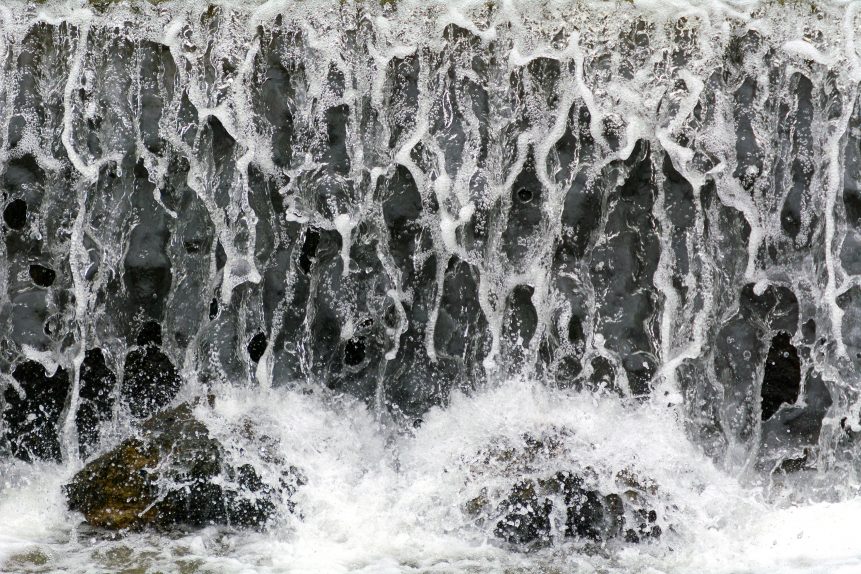
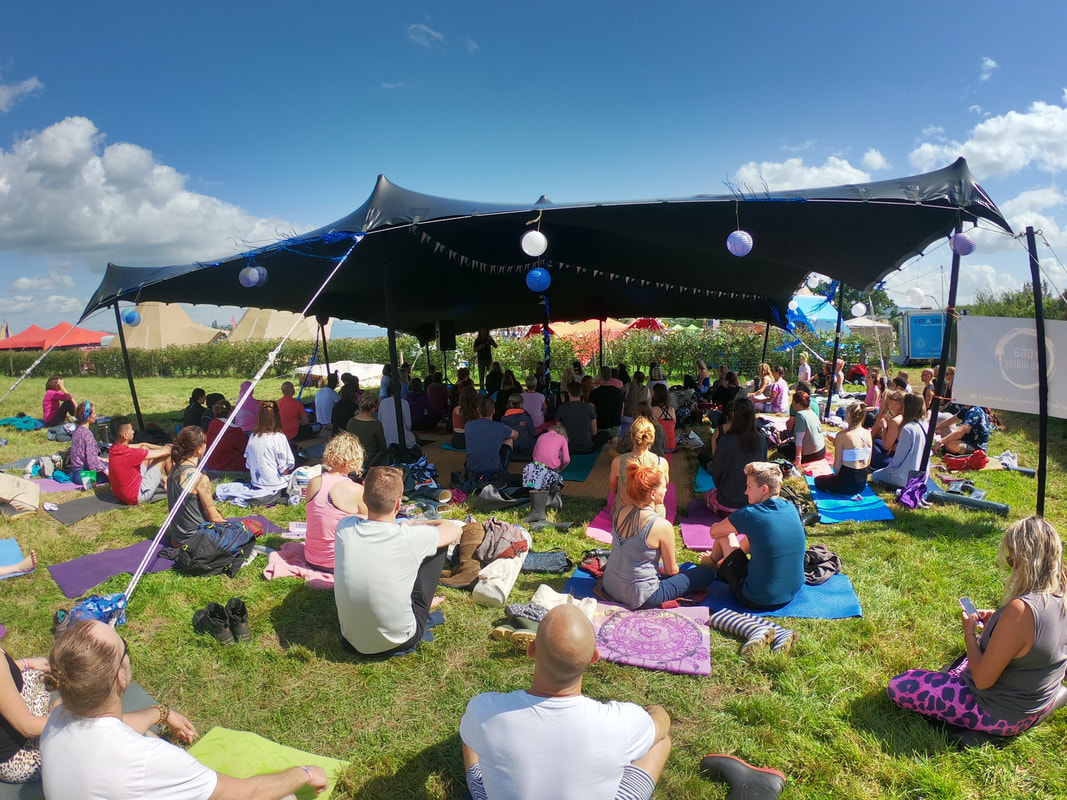
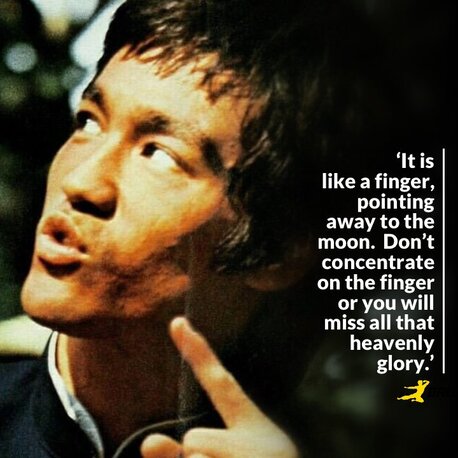
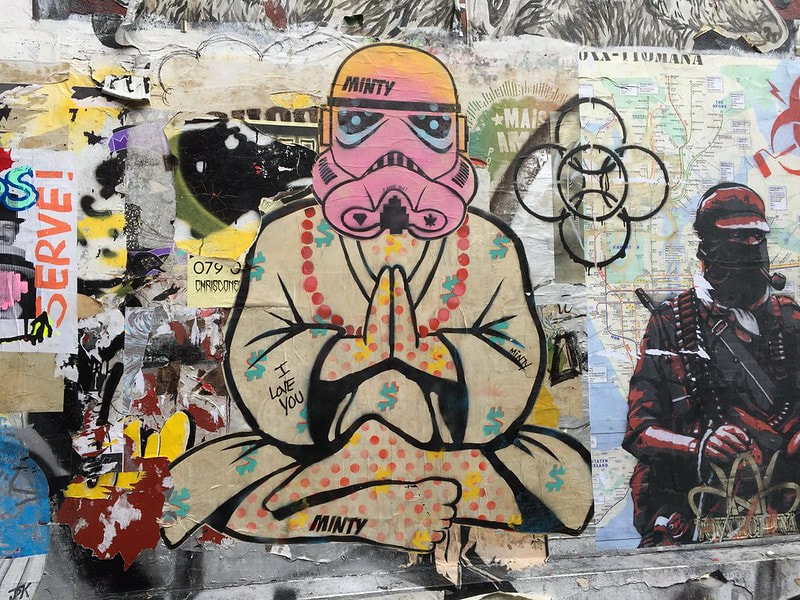
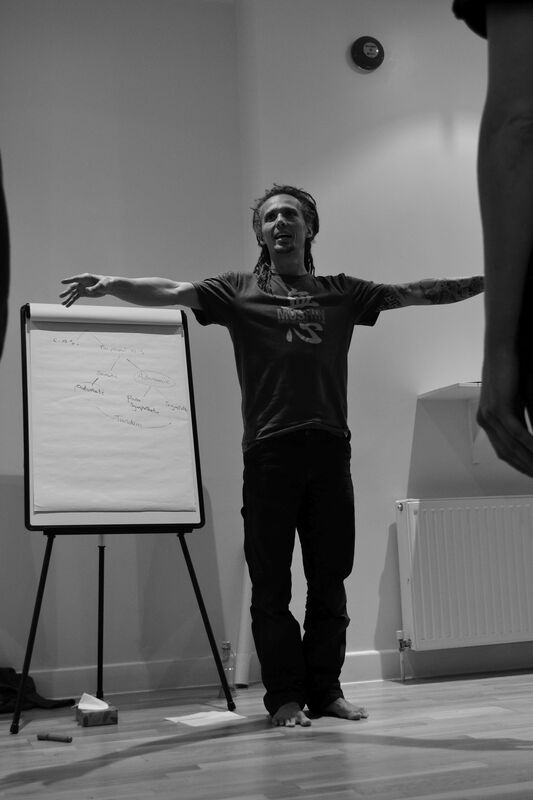
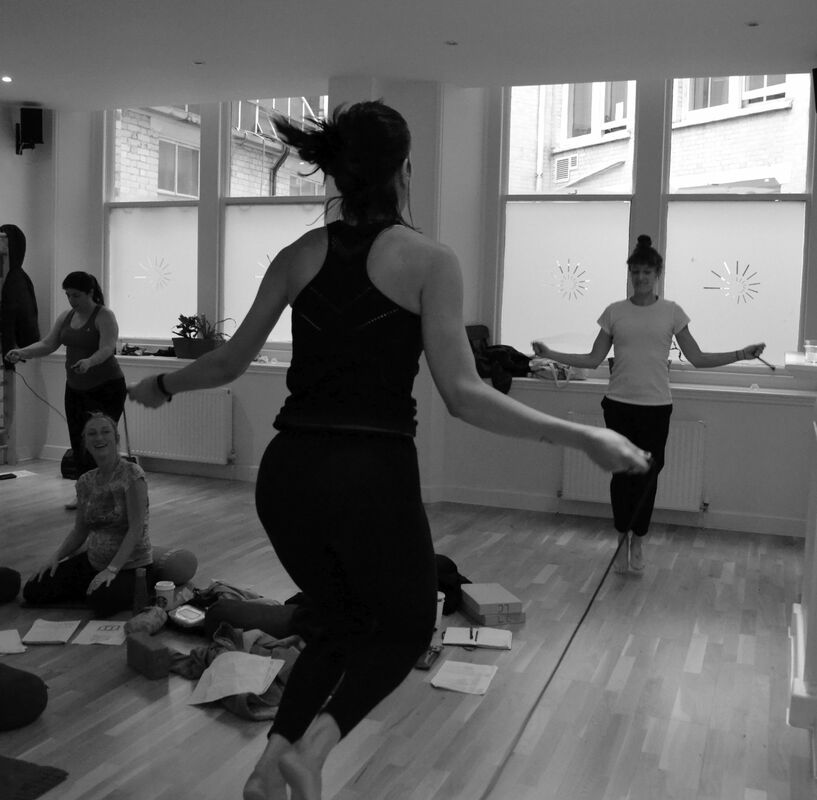
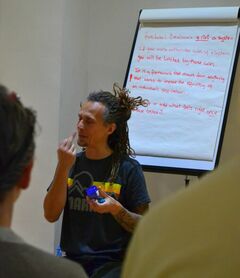
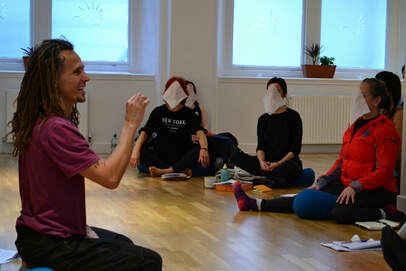
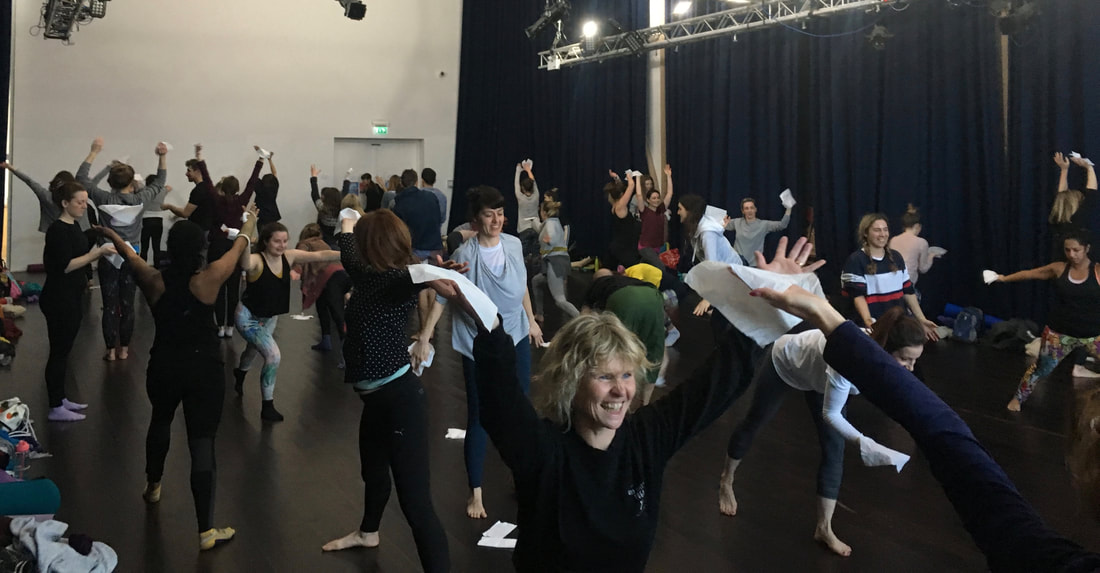
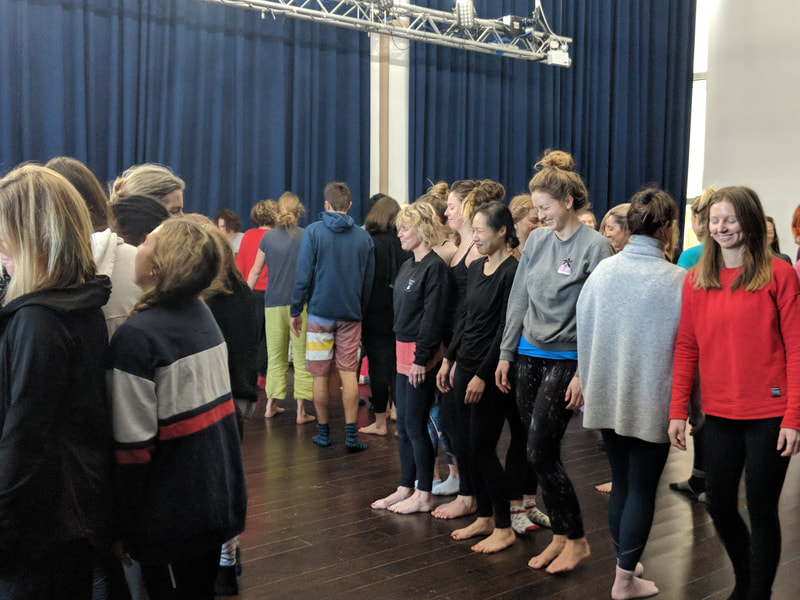
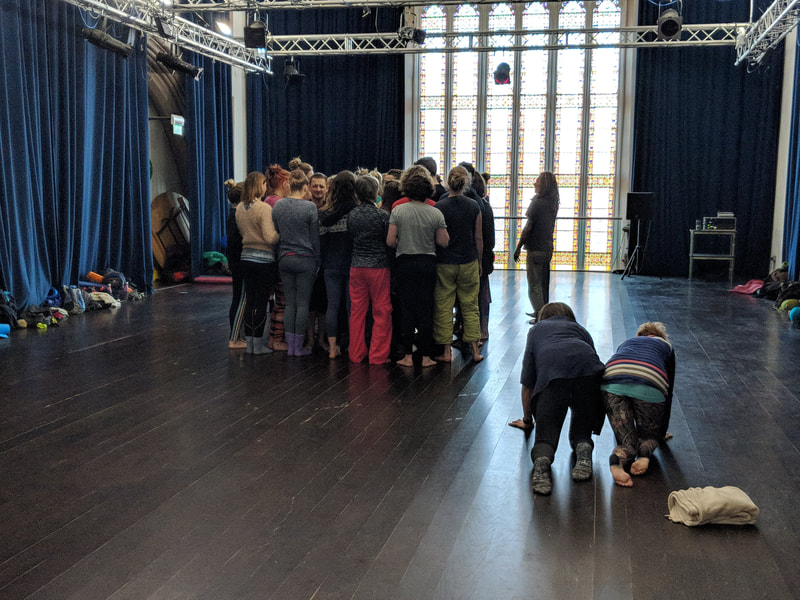
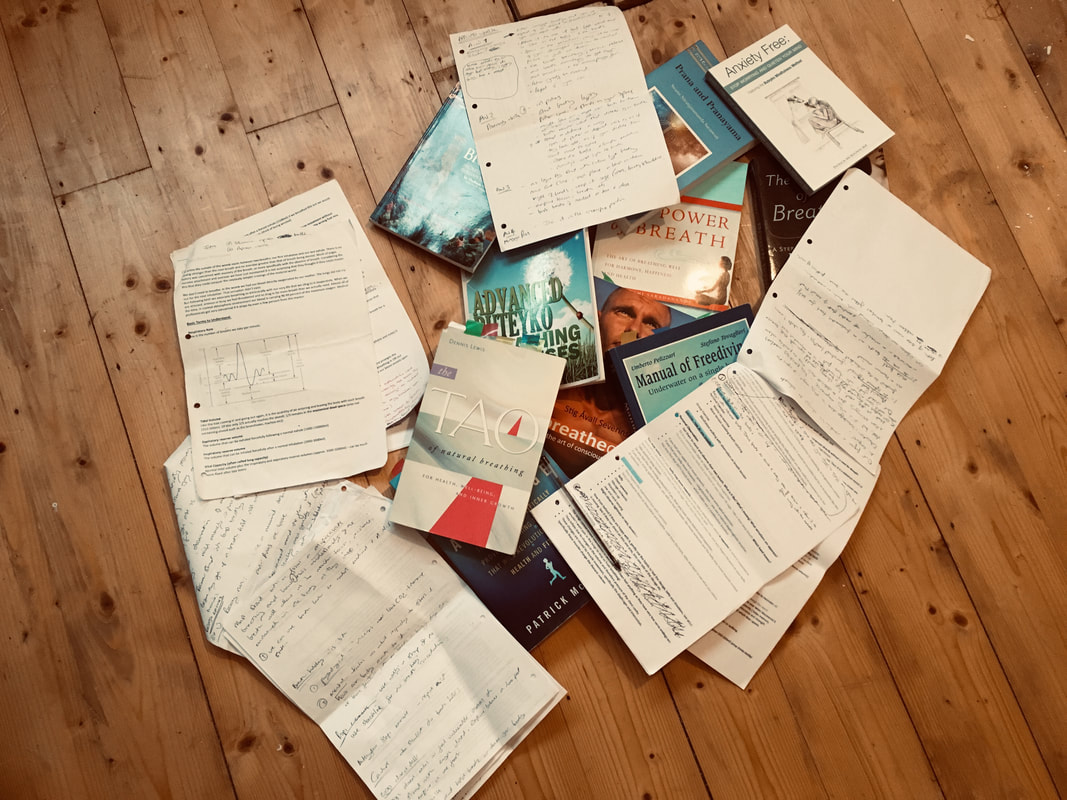
 RSS Feed
RSS Feed